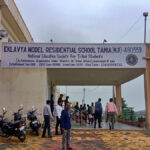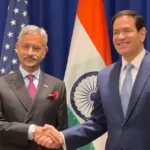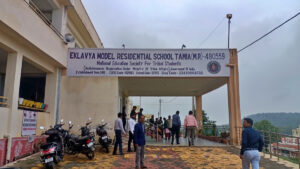The information provided by the Ministry indicates that, of the total number, 219 students qualified for JEE Main, 34 students qualified for JEE Advanced, and 344 students qualified for NEET UG.
The increase in qualified students occurred across 12 states, with Madhya Pradesh, Telangana, Gujarat, and Chhattisgarh having a significant share. It is also noteworthy that students from 101 of the 230 EMRS schools had students who qualified for both entrance tests this year, which are the two largest entrance tests in India.
State-wise Breakdown of Contribution
In what is a positive outcome for both Gujarat and Madhya Pradesh, Gujarat had 173 students qualify for NEET, and it had 37 students pass JEE Main, with three qualifying for JEE Advanced. Madhya Pradesh had 115 students qualify for NEET, 51 qualify for JEE Main, and 10 qualify for JEE Advanced. Finally, in this strong statewide performance, Telangana had 60 students qualify for JEE Main and 10 for JEE Advanced.
Students hailing from Andhra Pradesh had 17 JEE Main qualifiers and one JEE Advanced qualifier, while Chhattisgarh had 17 JEE Main qualifiers and 18 NEET qualifiers. The state of Himachal Pradesh had three students qualify for JEE Main, one qualified for JEE Advanced, and seven qualified for NEET. Support for tribal youth in Uttar Pradesh and Uttarakhand was very minimal, with one student qualifying for JEE Main from Uttar Pradesh, and three qualifiers from Uttarakhand.
Empowering Tribal Youth
The EMRS program was initiated by the Ministry of Tribal Affairs to provide quality education to tribal children in remote areas of India by providing free quality education affiliated with CBSE, as well as boarding, meals, and healthcare. Currently, there are 485 EMRS schools in operation, educating more than 138,000 students. The schools have seen a major expansion since the Union Budget in 2018-19, and the Union government aims to set up schools in blocks that have at least 50 percent of the population as tribal and at least 20,000 tribal residents. This class of the education program looks at the whole student while delivering quality education, academics, and sports programming, to help ease the opportunity gap that tribal youth face.
The incredible increase in the number of students qualifying from Eklavya Model Residential Schools demonstrates the potential of tribal giftedness and talent within the educational ecosystem in India. As students continue to succeed in competitive exams, they are able to redefine success for themselves and begin the process of inspiring and motivating future generations of tribal youth to seek their academic goals.
This notable accomplishment is a testament to the continued commitment of the EMRS framework, as well as the sustained efforts to improve educational opportunities for Scheduled Tribes across the country. The success of these learners in JEE and NEET highlights the power of education to transform lives and uplift communities.












More Stories
Why Indian Parents Are Turning to International Boards Like IB and Cambridge
CBSE Date Sheet 2026 Released: Class 10 & 12 Board Exams to Begin on February 17
Krishnagiri Hosts Special Guidance Programme for Differently-Abled Class XII Students